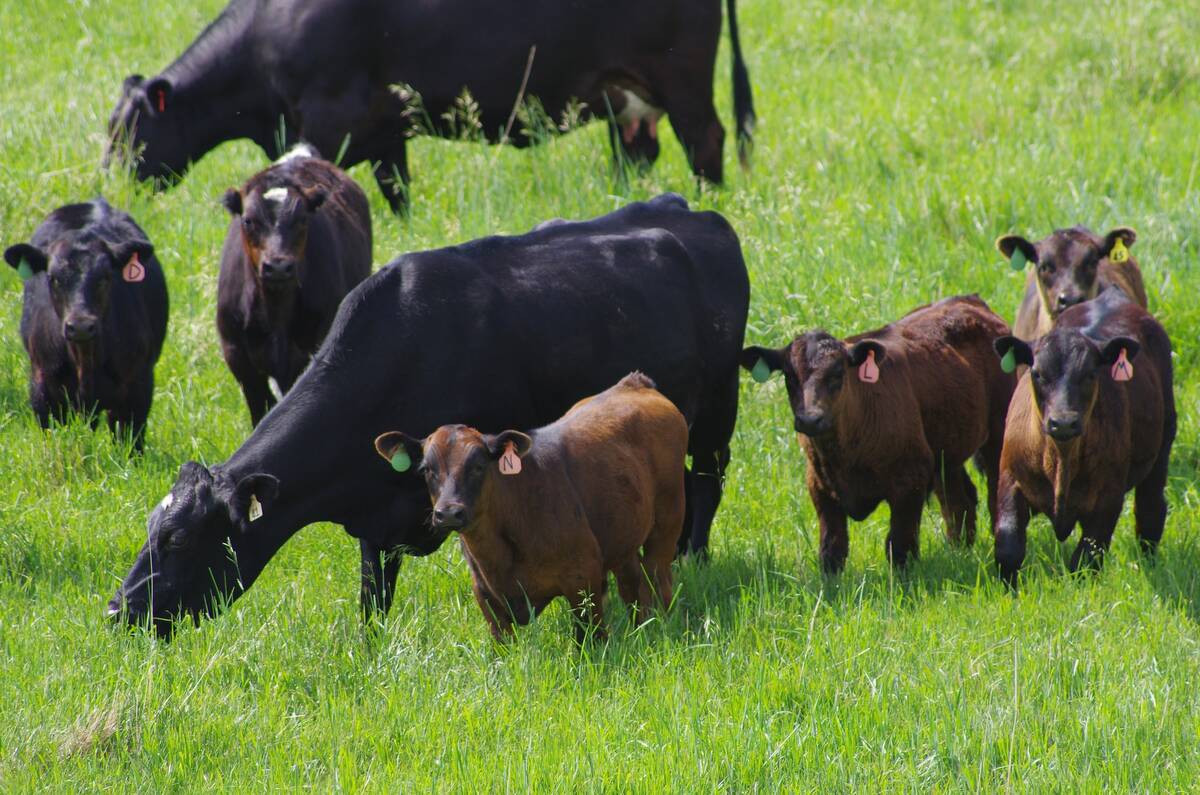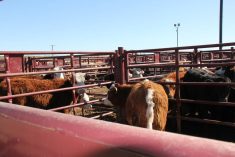What foreign animal diseases are we most concerned about entering Canada? You’ve probably heard a lot about African swine fever lately. Before 2022, highly pathogenic avian influenza was high on the list. African swine fever has the potential to decimate the Canadian pork industry and avian influenza has already wreaked havoc on the poultry industry. However, there are rapidly spreading foreign animal diseases that infect multiple key agricultural species in Canada. One of the most known, and arguably the biggest threat, is foot-and-mouth disease.
Foot-and-mouth disease is a virus that infects cloven-footed animals. In Canada, those are most notably cattle, pigs, sheep and goats. Closing export markets or depopulating those national herds would be devastating.
If foot-and-mouth isn’t in Canada, then how are we most likely to introduce it into the country? Canada isn’t a big importer of live pigs, sheep or goats. Imported cattle come primarily from the U.S., a recognized foot-and-mouth disease-free country and often are immediately placed in terminal feedlots, where they remain until slaughter. Foot-and-mouth doesn’t require direct animal-to-animal contact to spread either. The virus just needs to encounter the mucosal surfaces (nose or mouth) or respiratory tract surfaces (nasal cavity, throat or lungs) to infect a healthy animal.
Read Also

Diagnosing and preventing lump jaw in beef cattle
Causes, symptoms, treatment, prevention and prognosis of lump jaw in beef cattle
The virus is shed in manure, milk, saliva and blood from infected animals. The virus is also found in high numbers in the fluid and tissue from the hallmark blisters and scabs that develop on the animal’s mouth, udder or hooves. As a non-enveloped RNA virus, foot-and-mouth disease is very hardy and can survive in water and on surfaces for up to a month. It is highly conceivable that foot-and-mouth could be tracked into Canada by equipment, clothing, and most probable, footwear that has come into contact with the virus.
Foot-and-mouth disease is endemic in most of Africa and the Middle East and parts of Asia, including China, India and Thailand. It’s also present in some regions of South America. While chances of picking up foot-and-mouth on your footwear in one of these countries as a tourist is low, it increases as visitors travel into more rural regions, or embark on activities in areas that are frequented by wild ungulates. If you are visiting farms in these countries, the risk is further increased.
Producers and employees can visit farms in countries infected with endemic foot-and-mouth disease and return to farms in Canada with minimal to no risk of introducing foot-and-mouth. To begin with, it’s important to know what federal regulations are in place for people returning to Canada who are coming from foot-and-mouth disease-positive countries.
When going through customs, you are required to truthfully answer if you have been to a farm in the country you have visited. A customs officer will ask you when you were last on-farm and what measures you took to clean and disinfect your footwear and clothes. As someone who has visited farms in a foot-and-mouth disease-positive country, I can attest to how straightforward this process is. You are required to avoid visiting farms, zoos and places that wildlife frequent (national, provincial and some local parks) for five days after returning. If you have directly been in contact with a foot-and-mouth case or premise, extend this time to 14 days.
In addition, there are several best practices for individuals returning to Canada from a foot-and-mouth-positive country. Wash clothes before returning to Canada if possible. Preferably dry clean clothes or use bleach while washing clothes. If dry cleaning or bleaching is not an option, use laundry sanitizer. If clothes are not washed before return, consider washing them in a laundromat, rather than the home or farm washing machine where clothes that enter the barn or farm are washed.
Separate clean from dirty laundry during the trip — pack sets of clothes per day in sealable plastic bags so that dirty clothes do not contaminate the rest of the luggage. Use disposable boot covers or coveralls, or borrow footwear if going on-farm or entering high-risk areas, if possible or practical.
Either leave footwear behind or disinfect before departure. Common and effective household products include:
- Fifty per cent water and 50 per cent vinegar for 30 minutes.
- 100 g of sodium carbonate (washing soda) per litre of water for 30 minutes.
- Two grams of citric acid powder per litre of water for 30 minutes.
- Disinfectant products such as accelerated hydrogen peroxide (Prevail) or oxidizing agents (Virkon).
- Phenols such as Lysol and alcohols are not effective against foot-and-mouth disease.
Leave clothing and footwear in a contained area, such as a garbage bag, for 40–60 days after disinfecting if you intend to wear items around livestock or wildlife again.
If hosting international guests from foot-and-mouth disease-positive countries, ask them to shower before coming to your farm and wear freshly laundered clothing that has not been exposed to livestock recently (or ever). Provide farm-specific coveralls and footwear for guests. Limit personal items brought (such as keys and phones) and disinfect these items before coming to the farm. Accompany your guests at all times.
It is a big and exciting world to explore. Foot-and-mouth risk reduction can be practiced in a way that still allows people to have unique experiences in or return home to foot-and-mouth disease-positive countries without compromising the security of the Canadian livestock industry.
– Dr. Lexie Reed is a food animal veterinarian at Sunny South Veterinary Services in Lethbridge, Alta.
















